Primary Arms Staff

Your firearm is a machine, and like any other machine, it needs occasional maintenance to stay in working condition.
If you’re a new gun-owner, disassembly and maintenance may appear daunting, but we’ve got good news: cleaning is pretty easy when done properly. For many, firearms maintenance is a quiet, meditative task that leaves a lasting sense of satisfaction. When you clean a gun, you come away knowing that your firearm is in its best condition, ready for whatever comes next.
Before you start any firearms maintenance, you’ll need a few tools and a bit of knowledge on where to start. This blog should give you everything you need to clean a gun.
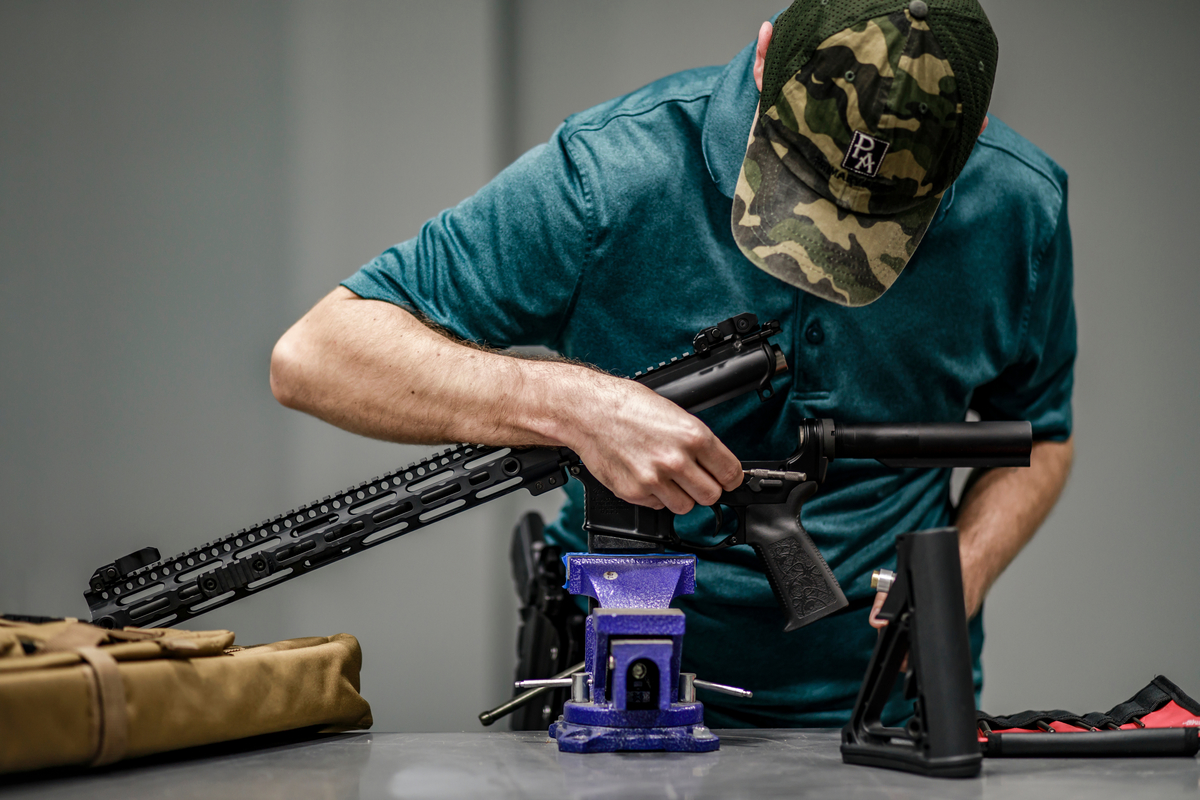
GUN CLEANING KIT
You will need a few supplies and tools before you can clean your pistols, shotguns, or rifles.
First, you’ll need a carbon-removing solvent. These solvents break down the fouling that builds up in your gun when you fire a cartridge. If you let the fouling build up, it will gradually thicken until it impedes the function of the firearm. A bit of solvent and a cotton patch will eliminate most fouling in just a few scrubs.
For a deeper clean, you’ll also want a brush to help break-down the built-up pockets of carbon. This brush can be as simple as a toothbrush, though we carry a wide variety of brush sets that will do a better job and last longer. Another benefit of a brush set is that many will include barrel brushes, which you will need to remove fouling from your bore. That said, if you don’t want to buy a full set, you can always buy brushes individually too.
Depending on the gun, you may also need a punch set. Many firearms have pins that must be removed for a full cleaning, and these pins can get stuck when the gun is dirty. Using a punch, you can remove these pins without scratching up your gun’s exterior.

Finally, you’ll need a lubricant to protect your moving parts. Many gun solvents, such as Safariland CLP, have a lubricant built into it, but for the best results, we recommend a dedicated lubricant that you can add separately. You’ll want to be certain that your firearm is always lubed before you go out to shoot, as an unlubricated firearm will wear out faster.
When choosing a lubricant, you will have to decide between oil and grease. There is no definitive best option, but there are a few important differences to consider. Grease is thicker than oil, so it will last longer and resist high temperature, but there’s a greater risk of gumming up with dirt and debris. If you’re in a dusty area, a thinner oil may offer better long-term performance.
If you’re a new gun owner, we recommend purchasing a deluxe cleaning kit. Deluxe cleaning kits provide everything you need to clean a gun from start to finish. They also include a case or pouch for storage and organization, so you never lose your brushes.
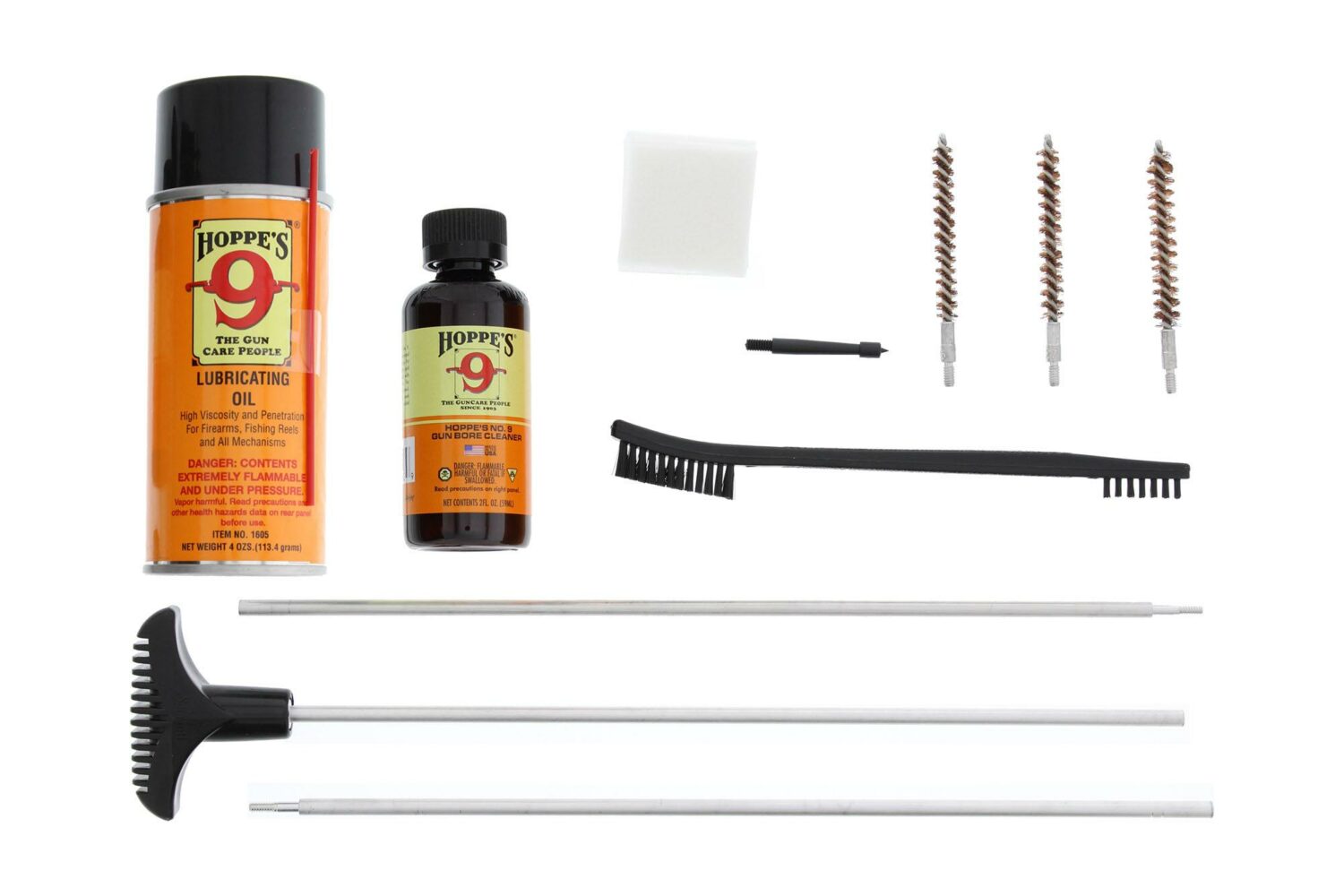
HOW TO CLEAN A PISTOL
Cleaning a pistol is easy.
To clean most modern semi-automatic pistols, you will need to remove the slide and barrel. As always, safety is the top priority. Verify that the gun is unloaded and always follow the instructions in your owner’s manual. Every pistol is different, so when in doubt, follow the manufacturer’s given instructions on cleaning in maintenance.
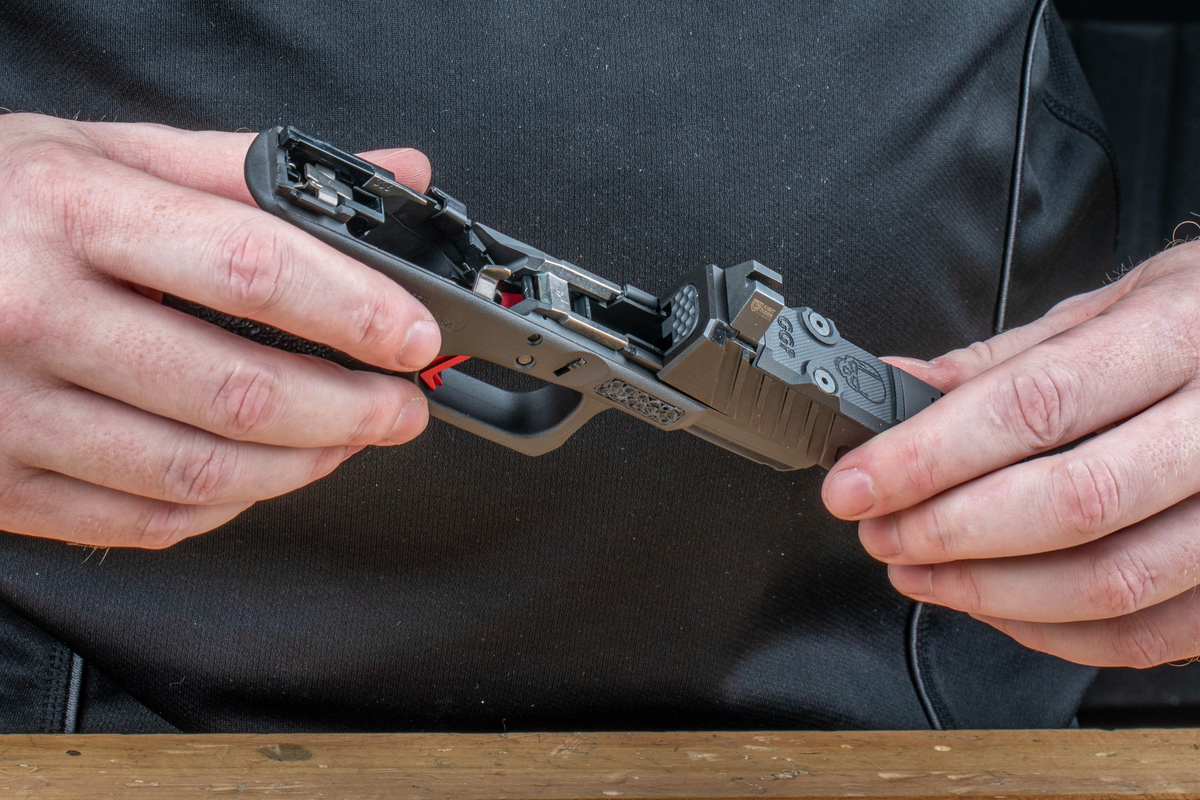
That said, you’ll always want to clean these three major areas:
1) The Barrel: To clean the barrel, you’ll need barrel brushes, solvent, and cotton patches. Use the brass brush with some solvent to loosen up the fouling in the bore. Once you’ve dislodged the carbon, you can switch from the brush to a cotton patch, which will clear out all the remaining solvent and filth. Then wipe off the exterior of the barrel with some solvent and a cotton patch to get it sparkling.
2) The Frame: To clean your pistol’s frame, use a toothbrush and gun solvent to loosen up the carbon fouling. Be sure to brush every surface, but focus on key components like the trigger, magazine release, and frame rails. When you’ve eliminated most of the carbon deposits, rub your frame down with a rag or cotton patch to dry it out.

3) The Slide: Like the frame, cleaning your slide will mostly involve rubbing it down with a toothbrush and gun solvent. If there are hardened deposits of carbon, you can use a heavier brush or pick to help scrape it off. Check that fouling hasn’t clogged your striker channel or the slide rails.
To finish, apply lubricant to the gun. You’ll want to start with the slide and frame rails in particular. The top of your barrel hood will also need some lubricant, as it moves during the firing process. For the same reason, your trigger assembly deserves a dot of oil, since it contains many small springs and moving parts. Finally, apply a bit of lube to the inside of the barrel, as it will prevent corrosion and water damage.
Once all your key moving parts have oil, you can now reassemble the gun and conduct a function check. If it runs smoothly, you’re good to go.

HOW TO CLEAN A SHOTGUN
Shotguns can be very reliable, so many gun-owners are lax on their maintenance. While fouling probably won’t break your shotgun, you’ll still want to maintain the bore to prevent corrosion in storage.
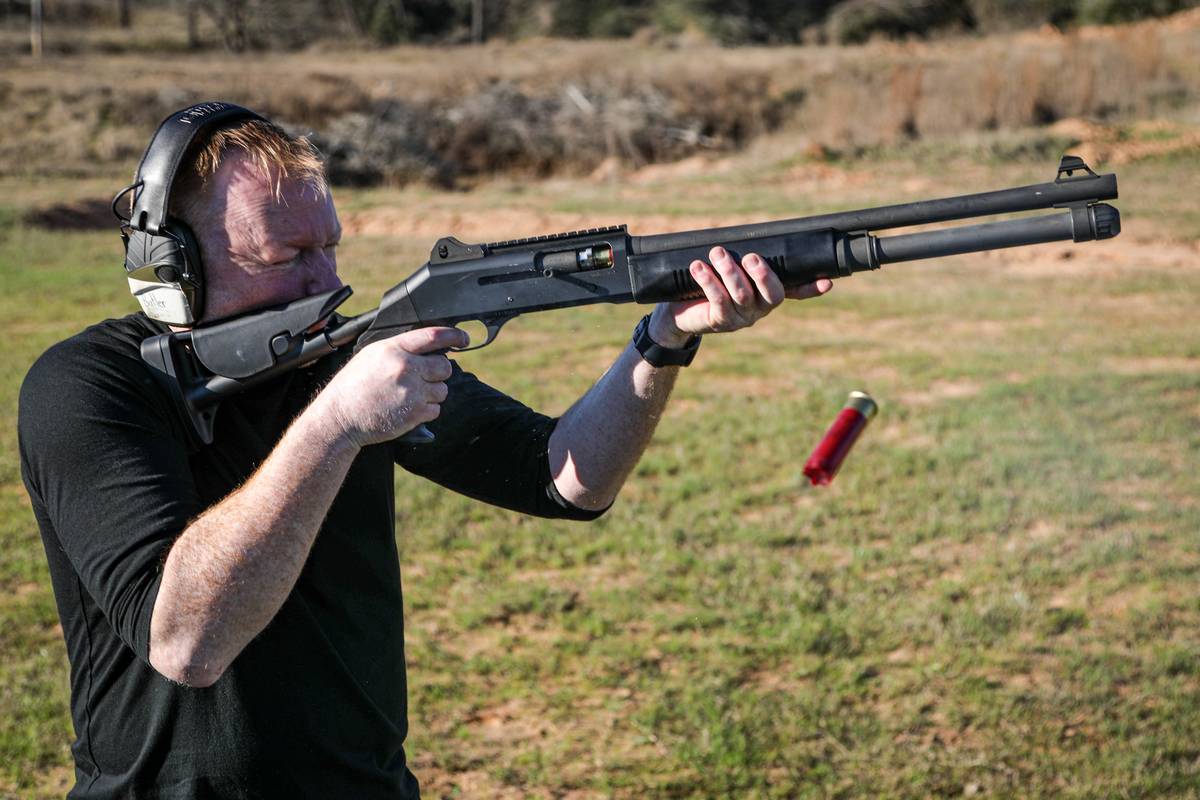
The best tool you can have for cleaning a shotgun is a bore snake. These nylon-and-brass ropes are a convenient way of cleaning the bores of rifles and shotguns. You don’t even have to disassemble the shotgun. Just spray on a bit of solvent and feed it down the barrel, running from chamber to muzzle. Each pass will clean out the barrel and swab it simultaneously. Once the barrel is clear, a bit of lubricant will protect it from rust and oxidation. You will also want to tighten and brush out the choke, where carbon fouling can get built-up. If there is excessive fouling in the choke, we recommend using a purpose-made ‘choke solvent’.

Other than the barrel, there isn’t a whole lot of additional maintenance for a shotgun. A quick solvent wipe down of the breech bolt and chamber followed by gentle lubrication will cover 90% of your upkeep. You might also choose to clean out your magazine tube, as carbon can slip down and slow the follower.
HOW TO CLEAN A RIFLE
Cleaning a rifle is just as easy as cleaning a pistol. In fact, many believe rifles to be easier to clean, since you can disassemble most modern semi-automatic rifles in a matter of seconds.
One thing to note: if you’re doing a detailed disassembly of a rifle for the first time, wear eye protection. Some rifles have small pins that are kept under spring pressure. When removed, these pins can shoot out at surprising speed, and you do not want to take a pin to the eye.
To clean your rifle, focus on three areas:
1) The Barrel: Your rifle’s accuracy depends on the quality and maintenance of the barrel. For precision rifles, cleaning the barrel requires multiple passes of brass brush and cotton patches, but duty-grade AR15s and carbines only need a bore snake. Using a caliber-appropriate bore snake, apply solvent to the brushes, and pass the snake from chamber to muzzle several times. This will cleanse most of the carbon without any trouble.
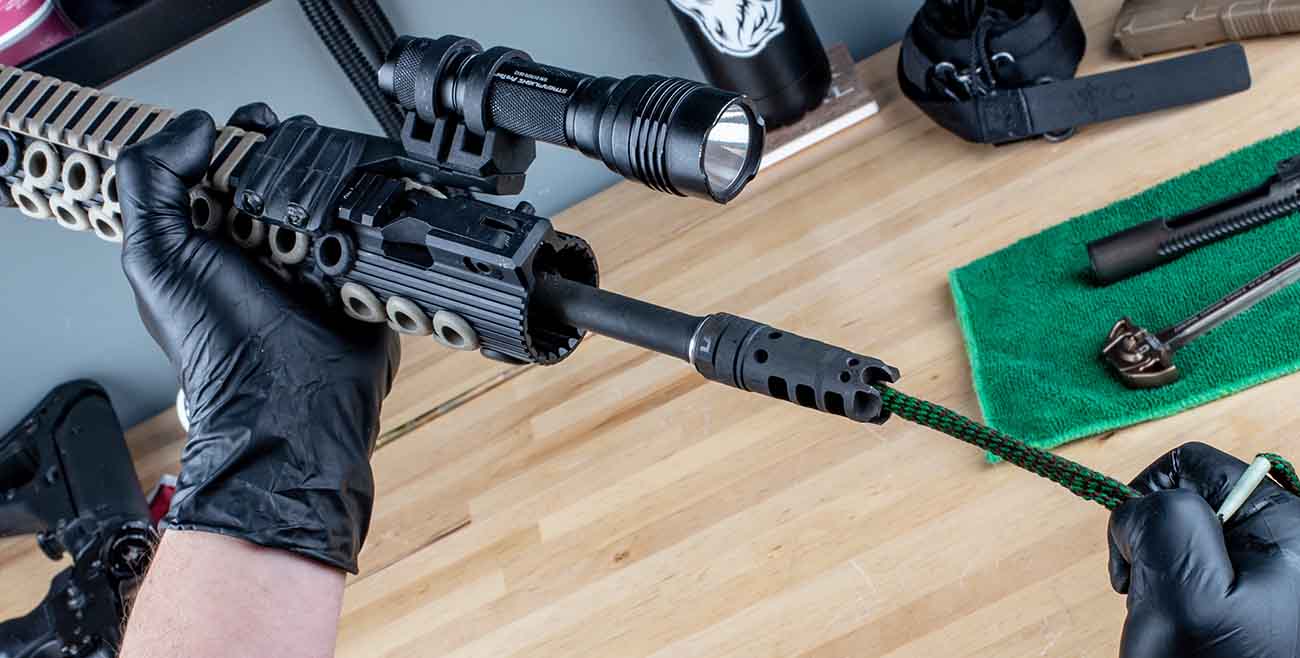
2) The Bolt: To clean the bolt, you will need to disassemble your rifle. For AR15s, this is as easy as popping the rear receiver pin, and tilting the upper receiver forward. At this point, you can separate the BCG from the upper receiver by pulling back on the charging handle.
Bolts and bolt carriers need more attention than any other part on your rifle. At minimum, brush the entire BCG down with solvent, but we recommend full disassembly to clean every component individually. This is easier than it sounds, and if you’re new to it, we recommend watching a video guide, as it’ll be easier to follow along with visual reference.

3) The Chamber and Receiver: Your rifle’s insides will get covered with carbon fouling. Here, your solvent and toothbrush are your best friends. Brush the internal surfaces with solvent while giving special attention to your trigger group and chamber. Once you’ve loosened up the carbon, you can use a cotton patch to mop up the rest.
Lubrication for rifles is important—especially for AR15s. Rifle bolts move quickly, and there are a lot of small parts in motion through the entire firing process. Your bolt will need to be lubricated frequently for its best function. Focus on the carrier rails, the cam pin, gas rings, bolt lungs, and bolt exterior, but you should also gently lubricate the extractor pin, ejector, and firing pin too.
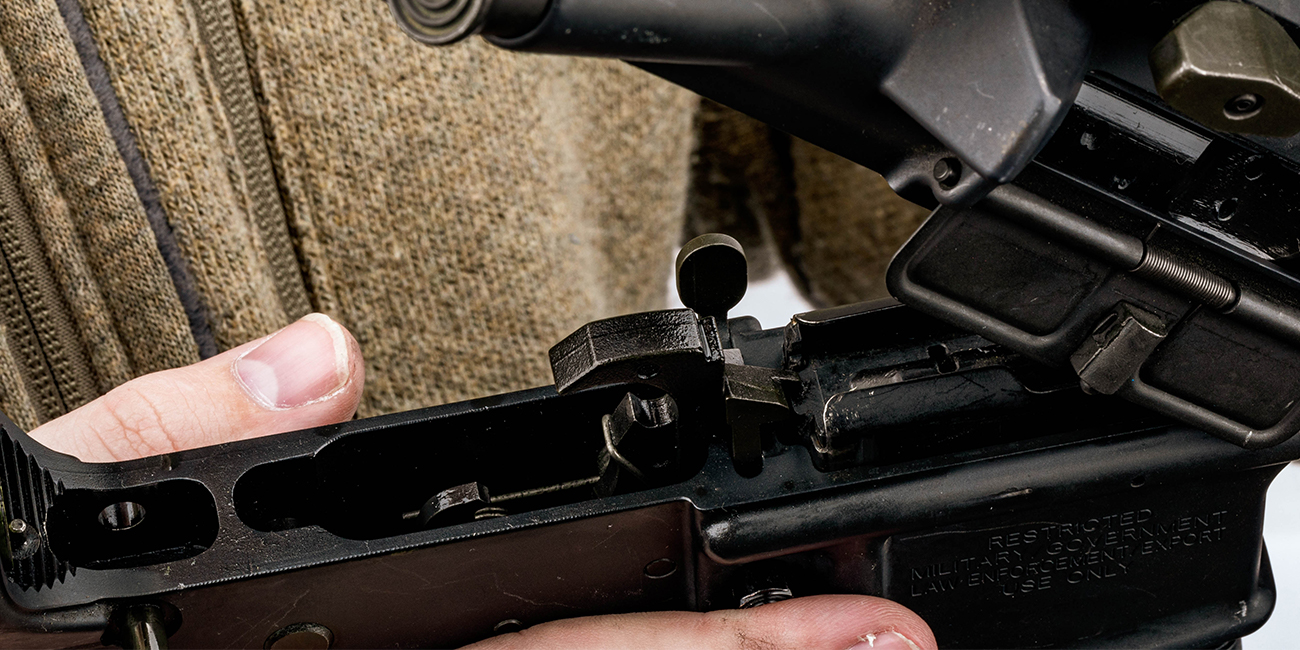
Besides the bolt, you should lubricate both takedown pins, as well as your buffer spring, forward assist, hammer face, trigger assembly, and charging handle.
For rifles other than the AR15, your key lubrication points may vary. Refer to the manufacturer’s manual for their recommendation, as it’s the best advice to go-by.
Once your rifle is lubricated, run the bolt a few times to confirm function and wipe down any excess oils that may have got onto the exterior.

Shop Tools & Cleaning Supplies
CONCLUSION
With these tips, you should be able to keep your firearms in peak condition.
And to keep you in peak condition, we offer one last piece of advice:
ALWAYS WASH YOUR HANDS AFTER CLEANING A GUN.
When cleaning a gun, you expose your hands to carbon and lead particulates. Lead poisoning is no joke. Take full preventative measures whenever you handle firearms to limit your exposure and remember to wash your hands any time you handle ammunition or a dirty gun.
That said, we recommend taking time and being thorough in your first cleaning. This experience will help you learn the layout of your gun, and you’ll develop an understanding of how each part contributes to your firearm’s function. It’ll also make it a lot easier if you ever want to replace a part down the line, since you’ll already be familiar with disassembly and reassembly.
If you have questions or ideas, you can always reach out to us here at Primary Arms using the chat function on the right side of your screen—or by messaging us on Instagram or Facebook. We’ll do our best to provide you with added instruction and details that will help you get the most out of your firearms.



